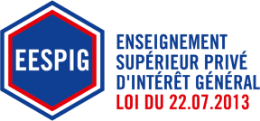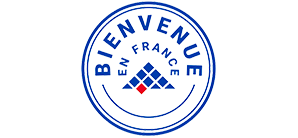Railway engineer program: improved to better meet the challenges of the railway sector
To better meet the challenges of the rail and guided transport sector and the need for engineers in this field, ESTACA is redesigning its railway program. The engineering school is also creating two new research chairs and a pre-graduate program with the SNCF group. It is also launching a post-master’s degree in ”Railway systems and technologies”.
A program that is evolving to better meet the challenges of the railway industry
This year, ESTACA is rethinking its Railway/Guided Transport program in depth. The reform meets the need to train future engineers able to answer societal and environmental expectations. In the engineering cycle, the courses now include three main areas: innovation, respect for the environment and a systems approach. New classes will broaden the skills of future engineers: Eco-design, Environment and health, New energies, Innovation methods, …
A new post-master’s degree ”Railway systems and technologies”, from January 2021 onwards, will offer graduate engineers an intensive, high-level, one-year training course on all aspects of railway systems and technologies. It is specifically aimed at students from other School programs or from other educational backgrounds who would like to move into this very promising sector in terms of jobs, and which lies at the heart of the ecological transition.
A pre-graduate/graduate program and two new chairs created with the SNCF group
From September 2020, Volunteer students in the 3rdrd and 4th year of the railway program can take part in a ”pre-graduate/graduate program” created jointly by ESTACA and VOYAGES SNCF: in exchange for a commitment to join VOYAGES SNCF on completion of the degree, students will have benefits including partial financing of studies and special pathway for internships within the company.
2 new research and teaching chairs have been created with the SNCF group.
The “on-board experience” chair will seek to include and improve the notion of “wellbeing” on board trains for both customers and staff. It involves the following areas: facilitating platform/train exchange flows and on-board traffic, developing safe, eco-designed and attractive materials, developing low-tech, low-energy and attractive on-board comforts and services, and facilitating soft mobility and micro-mobility. Finally, the chair will also develop simulation and analysis tools.
The ”Ecological transition and railway system resilience” chair will deal with new low-carbon modes of transport (hydrogen, batteries, etc.) as well as biosourced or recycled materials, reduction of braking dust, energy management, lightening of trains, and resilience to climate change.
Both chairs will commence in 2020 with educational projects.
Three new partnerships signed to enrich training and research
Partnership for ERASMUS Rail: an international opening
Within the framework of a call for projects from the European Commission, the European railway sector is creating ERASMUS rail to develop European student exchanges in the field and strengthen European training in the railway sector. ESTACA is part of the consortium created for the occasion as one of its two French academic partners.
Partnership for the creation of a Ferrocampus© in Saintes
ESTACA is involved in the project led by the New Aquitaine Region to create a Ferrocampus© in Saintes: a new reference point for railway training and research in France. A new Bachelor’s degree could be created and the best students would have the opportunity to enter the ESTACA engineering cycle. It also plans to provide an ambitious programme of continuing education using the railway facilities on the site, a former SNCF maintenance site.
Partnership for the creation of the Railway Engineering Interpretation Centre in Nîmes
With a view to creating a European Railway House on behalf of the Occitanie Region, ESTACA has joined the High Speed Railway Club as a major player. This site will house a Railway Engineering Interpretation Centre providing ESTACA students with unique conditions for projects and practical work: railway equipment (TGV, Eurostar, etc.), maintenance site, and infrastructure equipment. It will also provide the best conditions for ESTACA’s research projects.
* Illustration photo copyright: SNCF RESEAU/CAPA PICTURES/ALEXANDRE SARGOS













